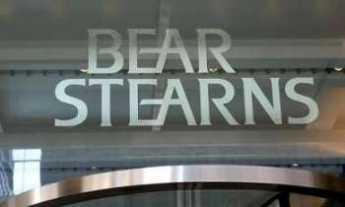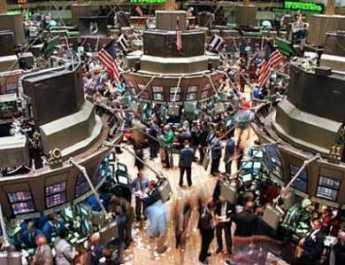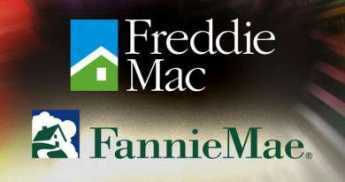Related Topics
Whither, Federal Reserve? (2)After Our Crash
Whither, Federal Reserve? (2)
Right Angle Club 2008
A report, to the year 2008 shareholders of the Right Angle Club of Philadelphia, by the outgoing president, Neale Bringhurst...
The Trigger and the Cliffhanger
Our own John Fulton recently told the Right Angle Club the market gossip about just who did what, and to whom, in the March 2008 beginning of the investment banking collapse. It begins to look as though Merrill Lynch had quite a bit to do with the mechanics of starting this impending market melt-down, although lots of other people helped.

|
| Bear Stearn |
Going back to 2005, Merrill was late to the securitized debt party and stretched to catch up. The broker reportedly sold large quantities of mortgage-backed securities (CDO) to the two hedge funds run by Bear Stearns. A buyer was able to convince himself such securities might pay as much as 20% income if leveraged up -- so attractive that Merrill independently decided to keep a lot of them for its own account. Nevertheless, the primary business of any broker is to buy and resell quickly, holding as little inventory as possible. Such sales, especially to hedge funds and institutional investors, were largely on margin. When suddenly the price of CDOs started to fall -- the rumor is that some unknown European bank started unloading them -- someone at Merrill made the decision to issue a margin call, that is, ask for cash to replace the loans. Bear Stearns reportedly asked for extra time to get the money together, but Merrill was adamant. So, Bear Stearns had to sell some of the CDOs in question to raise cash, dropping the market price. (this had not been the case seven months earlier when a bewildering market saw good stocks being dumped to cover losses in bad stocks.) But remember, in addition to the securities sold to Bear Stearns, Merrill itself had acquired huge quantities of similar CDOs; the internal coordination of Merrill has to be doubted. So the market value of what Merrill held declined, too, quickly forcing Merrill to announce an $8 billion mark-to-market write-down of its holdings, eventually followed by write-downs approaching $100 billion. In time, its own losses greatly exceeded the debt it was forcing Bear Stearns to pay. Merrill had shot itself in the foot.

|
| New York Stock Exchange |
At that point, suddenly no one would write Merrill insurance against price declines through the Credit Derivative market, so it's stock price declined on the New York Stock Exchange, further reducing the amount it was allowed by regulators to lend. Because Bear Stearns was a major bookie in the Credit default swap market, both the insurers and the insurees were at risk; doubled-up "counterparty risk" was so enormous the Federal Reserve and U.S. Treasury felt they had to bail the situation out, even though other failing institutions of comparable size had been allowed to disappear. At a minimum, two parties were at risk, at worst, a whole daisy chain of companies insuring other overlapping companies multiplied the risks to much more than the loss that originally triggered the chain reaction. At $62 trillion, the Credit Derivative market is so much larger than other markets that anything to calm it seemed an urgent necessity. (As a matter of fact, when the swaps were sorted out they canceled each other by at least 90%) Every bettor had seemingly felt justified in betting the ranch, because some other bettor stood behind them, and then another and another; hard though it is to believe, that was nearly the case. Since Bear Stearns held thirty times as much debt as its total stockholder equity -- quite a different situation--, an average price drop of only three percent was enough to wipe them out. When margin calls went out to people who themselves had to issue more margin calls to pay the bill, the chain reaction did indeed bring markets to a precipice.
Until better gossip surfaces, this is the description now in circulation for the details of the slide which got going in March 2008. A larger view might be that things were starting to get ugly in 2005, and Merrill should never have entered this particular market at all.

|
| Fanny Mae Freddy Mac} |
We are definitely not out of the woods. John Fulton pointed out the next crisis is that Fannie Mae and Freddy Mac are best regarded as insolvent. But since the credit crunch dried up the other half of the CDO market for mortgages, only Freddie and Fanny now remain to support housing transactions, with $5 trillion at risk in the market. That's about the size of the national debt, so when the Government assumed the risks of these two corporations, the national debt was effectively doubled. That could potentially send the dollar into a tailspin, along with U.S. Treasury bonds, while sending the price of oil skyward. So far, the Chinese have been remarkably cooperative, and Ben Bernanke and Hank Paulsen have been remarkably sure-footed.
So, what do we do if we fall into this abyss? Well, one thing debtors usually consider when threatened with insolvency is to walk away from either their debts or their creditors. In the nation's case with its debts, one major victim would be our system of entitlements. The national debt is now effectively $10 trillion. The unfunded entitlements are about $52 trillion; this is much the larger problem. Is it really true? Are we really saying these things?
John did indeed keep us awake, which is the major duty of a Right Angle speaker. .
www.Philadelphia-Reflections.com/blog/1509.htm
Originally published: Friday, August 08, 2008; most-recently modified: Sunday, July 21, 2019
| Posted by: ChaeYeon | Apr 24, 2012 2:40 AM |